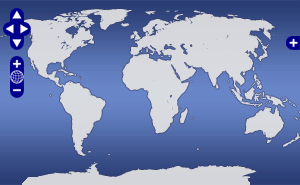Data Sets
Processed
Processed Data Sets
Sort by:
 Chemistry:Fluid
Chemistry:Fluid
Data DOI:
10.1594/IEDA/324226
Chemical data of fluids from discrete samplers and OsmoSamplers that were collected from IODP Hole U1362A
Locale
Cascadia
SubductionZone
File Format
XLS
Quality
2
Wheat, Geoffrey
 Chemistry:Fluid
Chemistry:Fluid
Data DOI:
10.1594/IEDA/324227
Chemical data of fluids from discrete samplers and OsmoSamplers that were collected from IODP Hole U1362B
Locale
Cascadia
SubductionZone
File Format
XLS
Quality
2
Wheat, Geoffrey
 Temperature
Temperature
Data DOI:
10.1594/IEDA/323876
Temperature Time-Series Data from the CORK in Hole U1301A on the Juan de Fuca Plate acquired from 2009-2013
Platform Info
CORK:U1301A
Device Info
TemperatureLogger:
Antares:1857
TemperatureLogger:
Onset:U12-015-03
Locale
File Format
ASCII
Quality
1
Details
Basement depth = 262.2 mbsf; Loggers deployed 2009 (AT15-51), recovered 2013 (AT26-03). The CORK in Hole U1301A was not properly sealed when installed in 2004, and cold ocean bottom water was drawn down the hole for several years. The flow down Hole U1301A spontaneously reversed in early September 2007, as is clearly shown by the pertinent data files and figure in Wheat et al (2010). In July 2009, IODP Expedition 321T (Fisher et al, 2010) returned to Hole U1301A to try to seal them with remedial cementing in the reentry cones. The remedial cementing did not seal Hole U1301A, which continued to discharge hydrothermal fluid from the volcanic crust.
Becker, Keir
RSMAS
Fisher, Andrew
UCSC
 Temperature
Temperature
Data DOI:
10.1594/IEDA/323878
Temperature Time-Series Data from the CORK in Hole U1362A on the Juan de Fuca Plate acquired from 2010-2014
Platform Info
CORK:U1362A
Device Info
TemperatureLogger:
Antares:1857
TemperatureLogger:
Onset:U12-015-03
Locale
File Format
ASCII
Quality
1
Details
Basement depth = 236 mbsf; Loggers deployed 2010 (IODP Exp 327), recovered 2014 (AT26-18). During July 2013 AT26-03 submersible operations, the large-diameter free-flow valve on the CORK wellhead at Hole U1362A was fully opened for a flowmeter experiment, and the hole produced copious warm fluids for the next year. This is clearly registered by sudden warming of the Onset data loggers that were placed at shallow depths in the hole.
Becker, Keir
RSMAS
Fisher, Andrew
UCSC
 Temperature
Temperature
Data DOI:
10.1594/IEDA/323879
Temperature Time-Series Data from the CORK in Hole U1362B on the Juan de Fuca Plate acquired from 2010-2014
Platform Info
CORK:U1362B
Device Info
TemperatureLogger:
Antares:1857
TemperatureLogger:
Onset:U12-015-03
Locale
File Format
ASCII
Quality
1
Details
Basement depth = 242 mbsf; Loggers deployed 2010, (IODP Exp 327), recovered 2014, (AT26-18). During July 2011 AT18-07 submersible operations, a large-diameter ball valve on the CORK wellhead at Hole U1362B was fully opened for a flowmeter experiment, and the hole produced copious warm fluids for the next two years. Rapid upflow between 2011 and 2013 is clearly indicated in the Antares thermal records from shallow depths in Hole U1362B, as documented by Neira et al. (2016).
Becker, Keir
RSMAS
Fisher, Andrew
UCSC
 Temperature
Temperature
Data DOI:
10.1594/IEDA/323877
Temperature Time-Series Data from the CORK in Hole U1301B on the Juan de Fuca Plate acquired from 2004-2010
Platform Info
CORK:U1301B
Device Info
TemperatureLogger:
Antares:1857
TemperatureLogger:
Onset:U12-015-03
Locale
File Format
ASCII
Quality
1
Details
Basement depth = 265.2 mbsf; Loggers deployed 2004 (IODP Exp 301), recovered 2010 (IODP Exp 327). The CORK in Hole U1301B was not properly sealed when installed in 2004, and cold ocean bottom water was drawn down the hole for several years. In July 2009, IODP Expedition 321T (Fisher et al, 2010) returned to Hole U1301B to try to seal it with remedial cementing in the reentry cones. This apparently stopped the downhole flow in Hole U1301B, as is shown by the increase in downhole temperatures recorded at the time and an apparent return to conductive thermal conditions as of Expedition 327 one year later.
Becker, Keir
RSMAS
Fisher, Andrew
UCSC
Expand

 Map View
Map View
